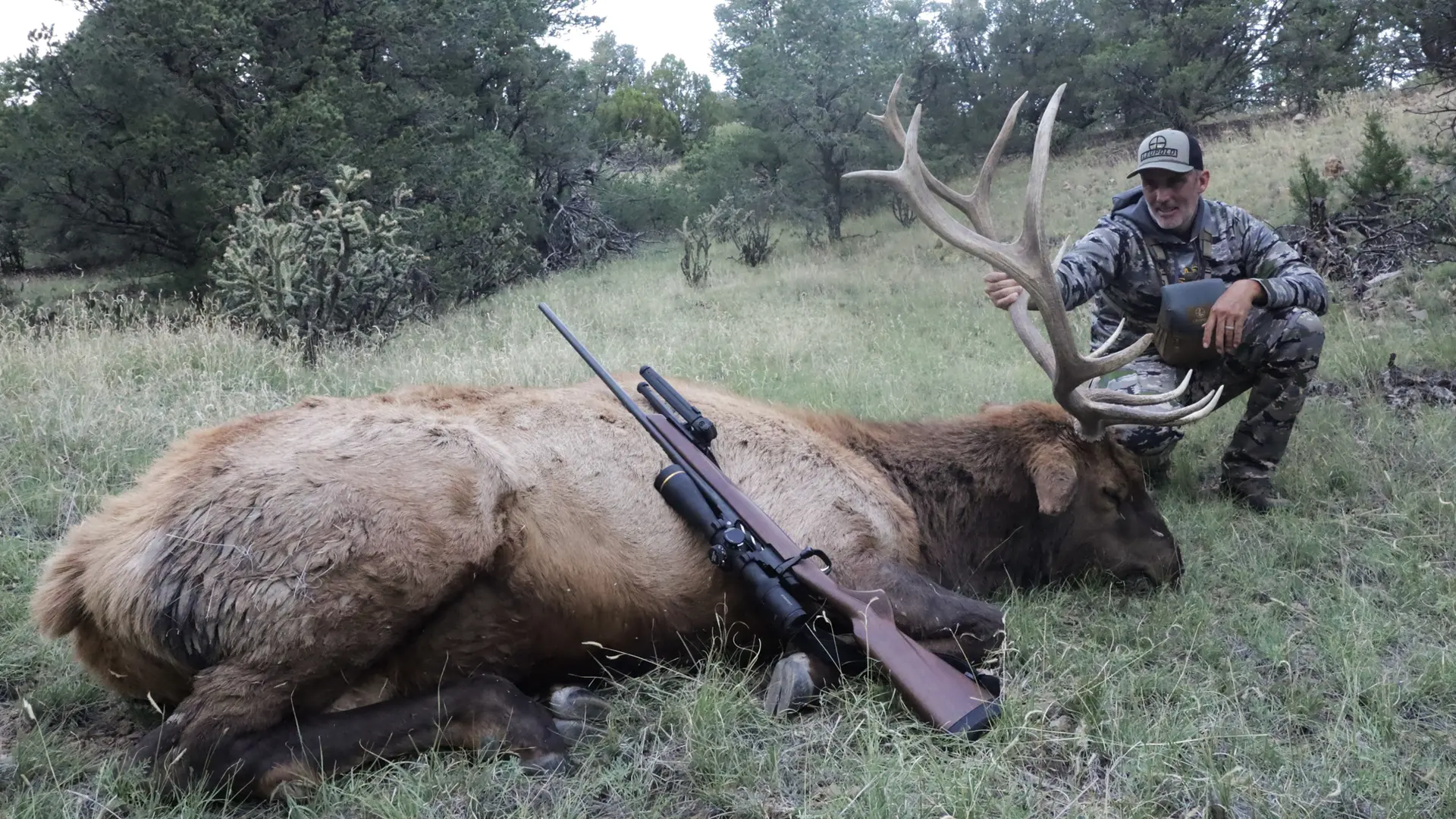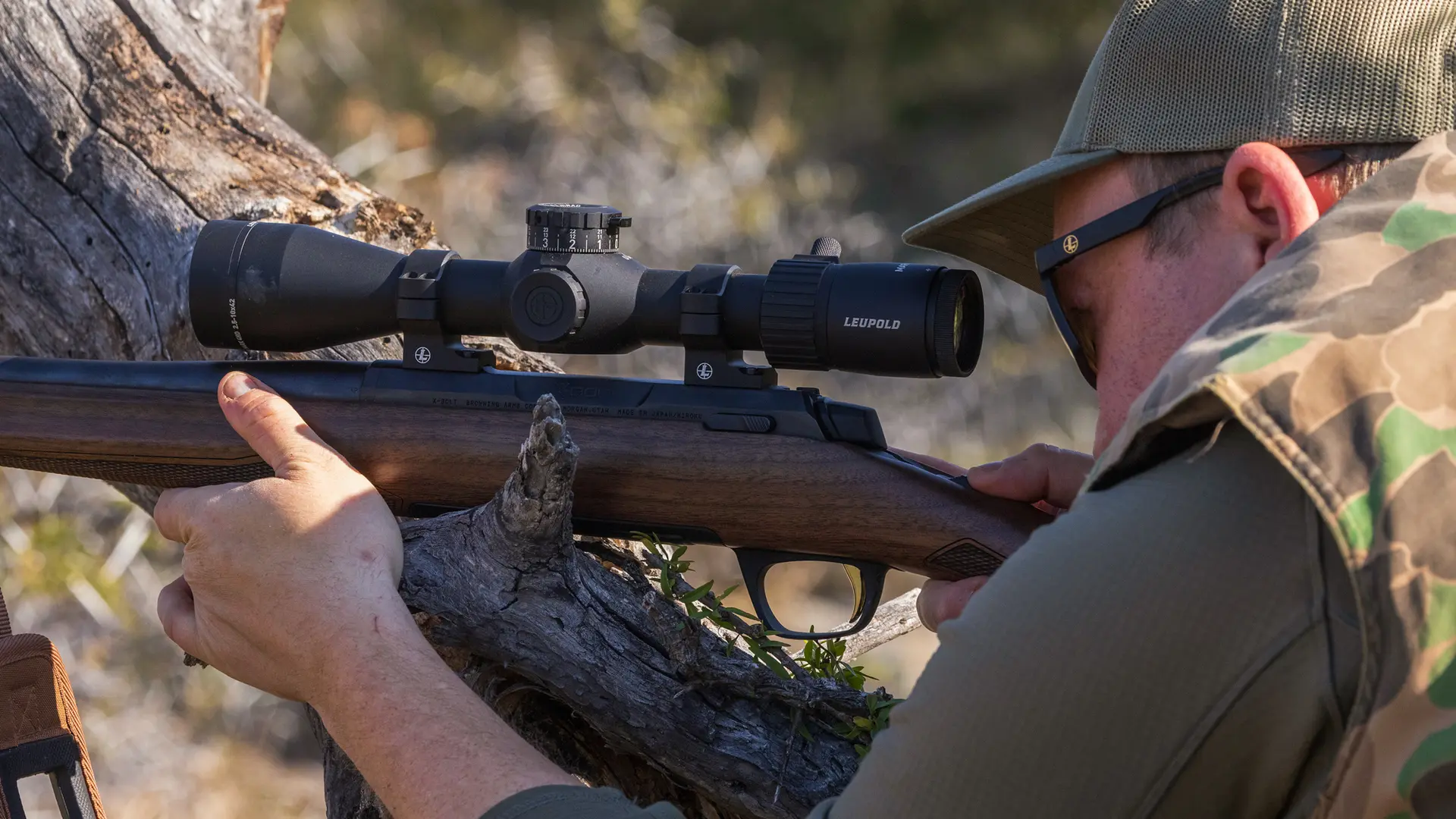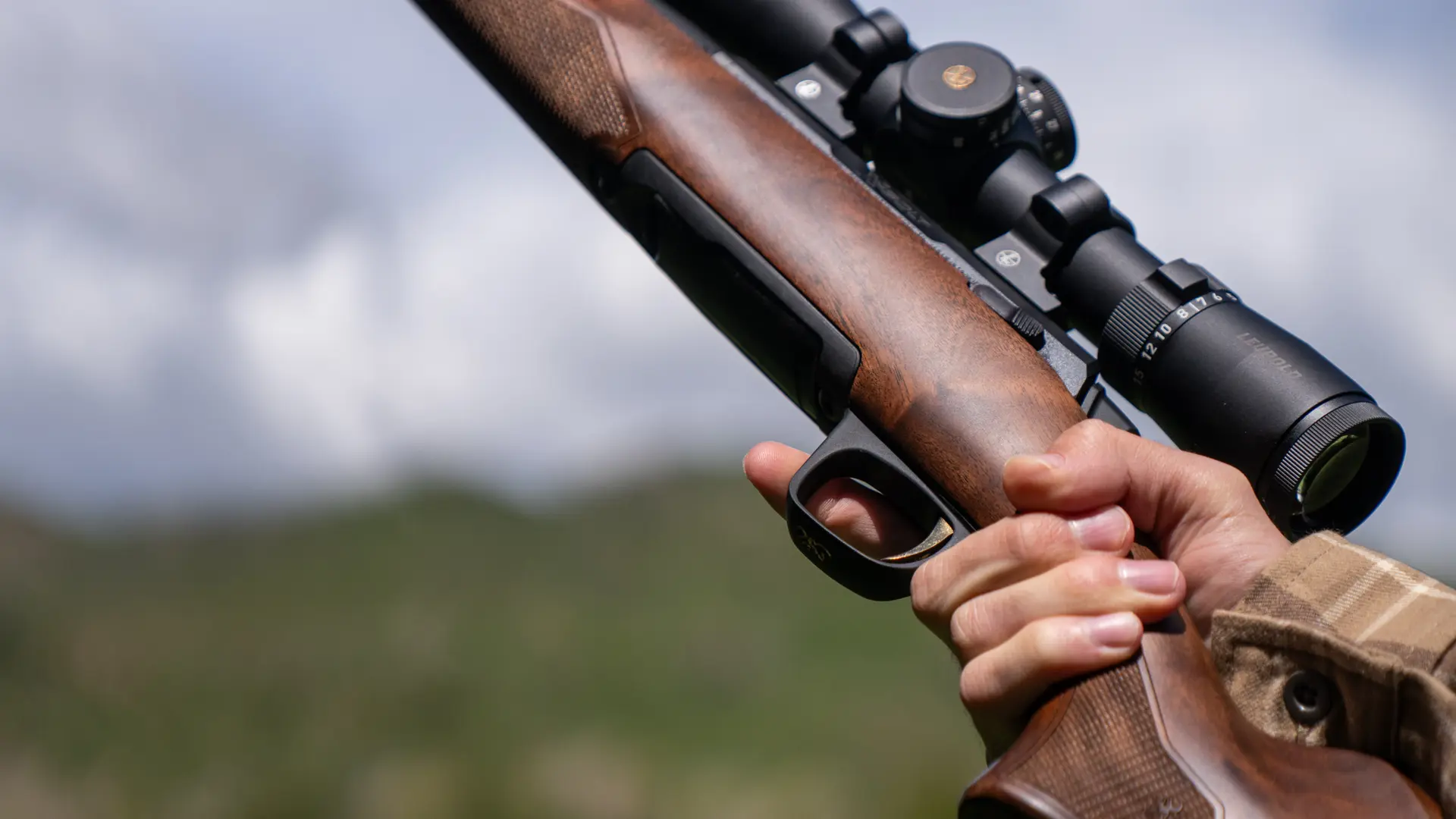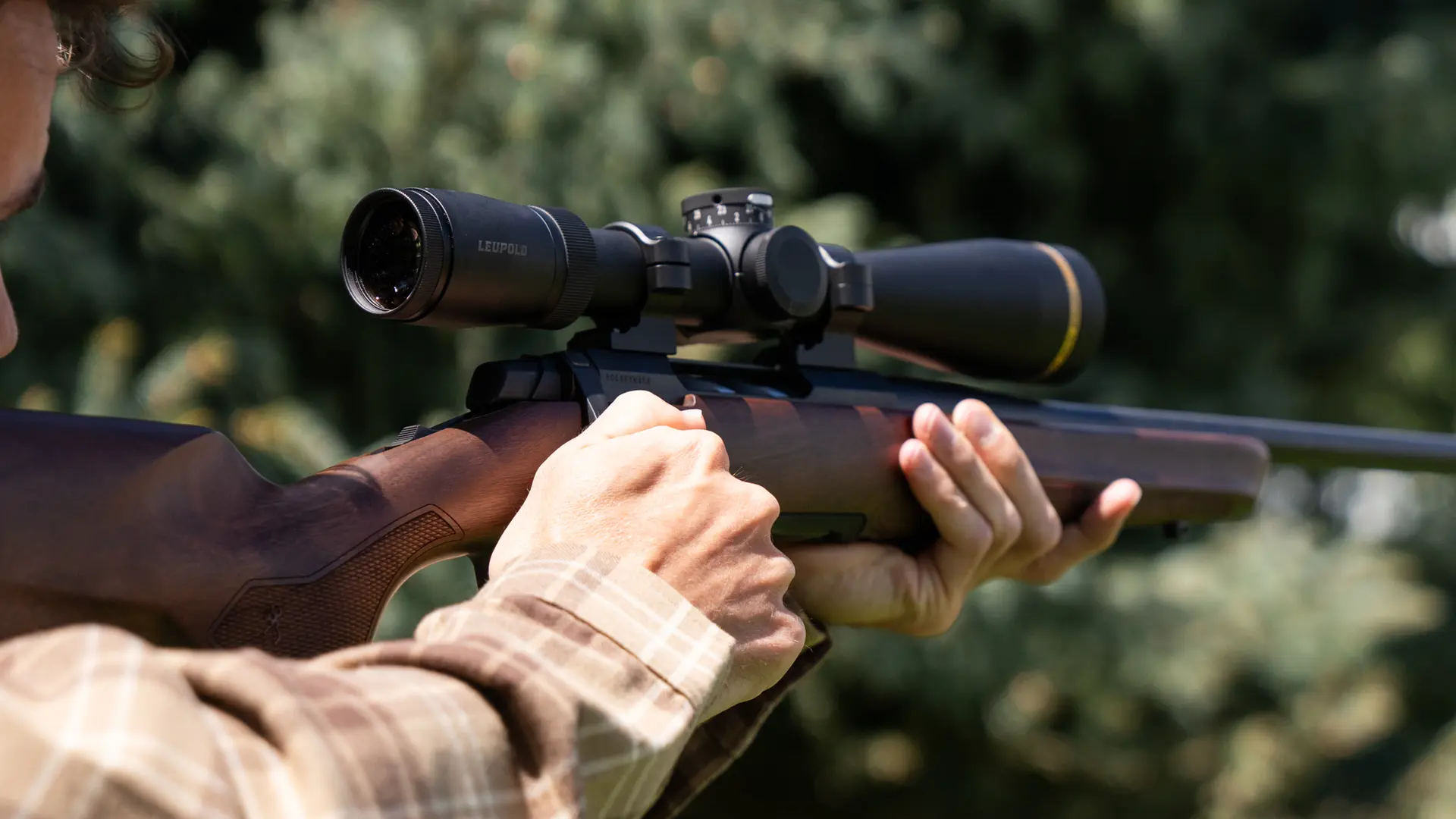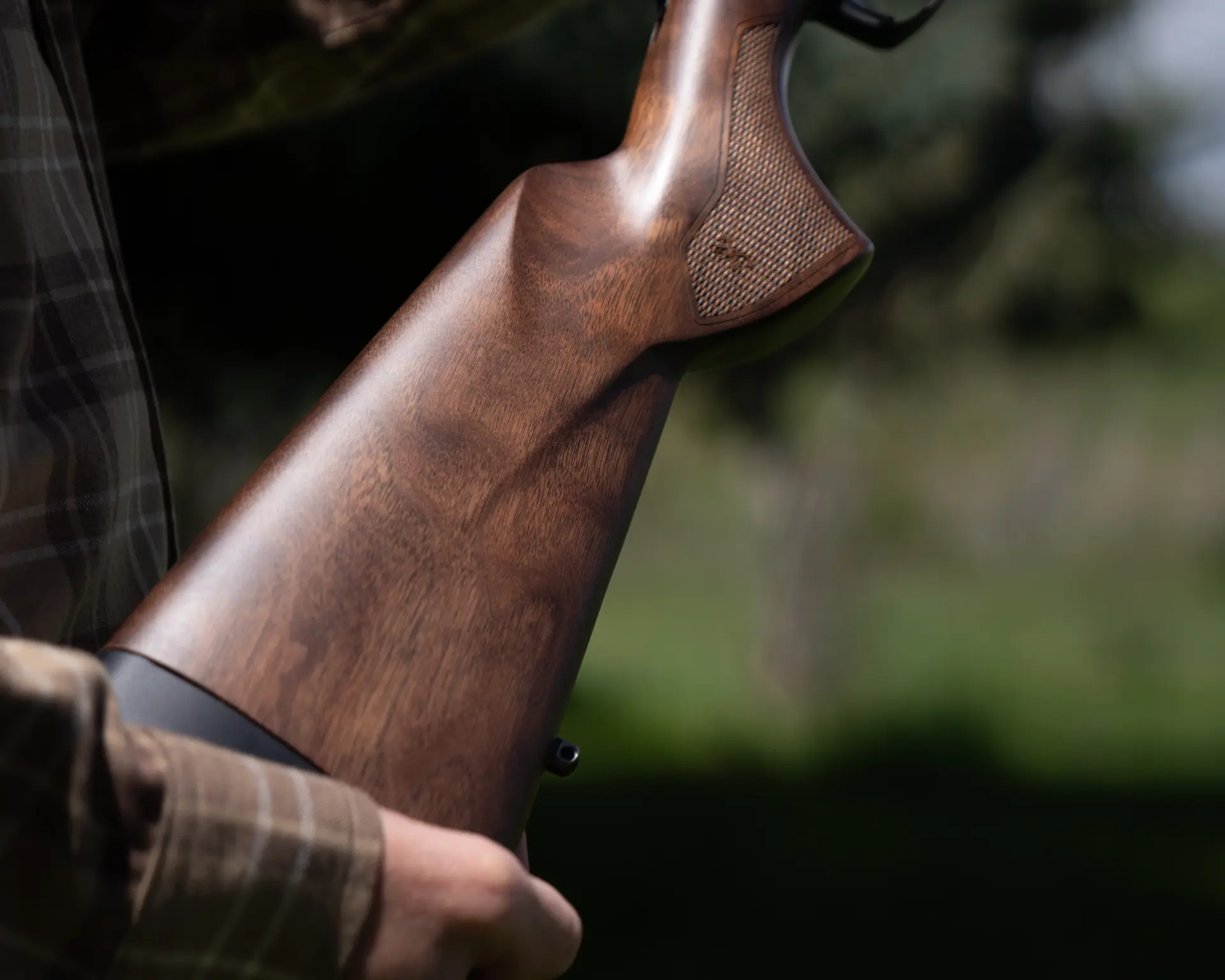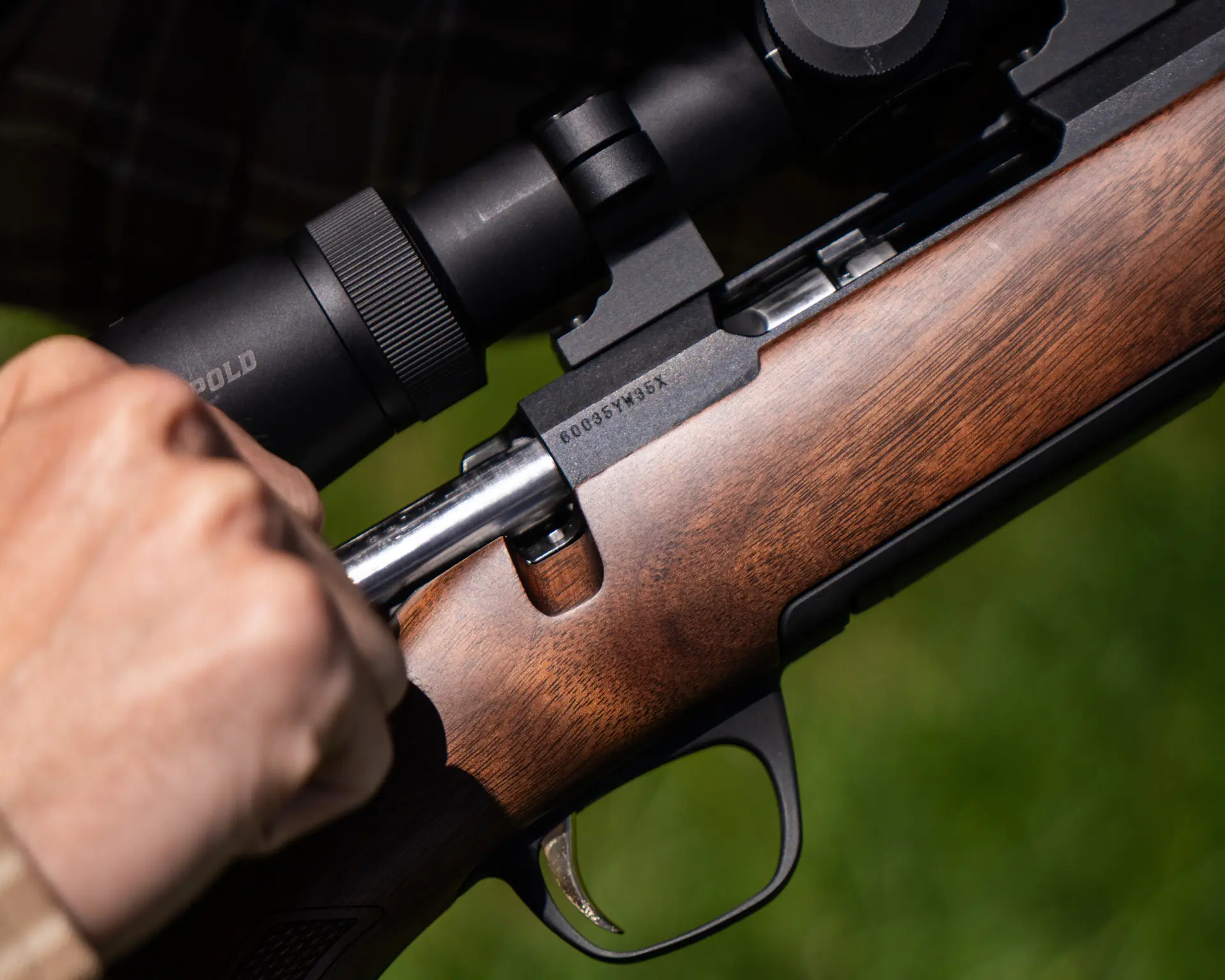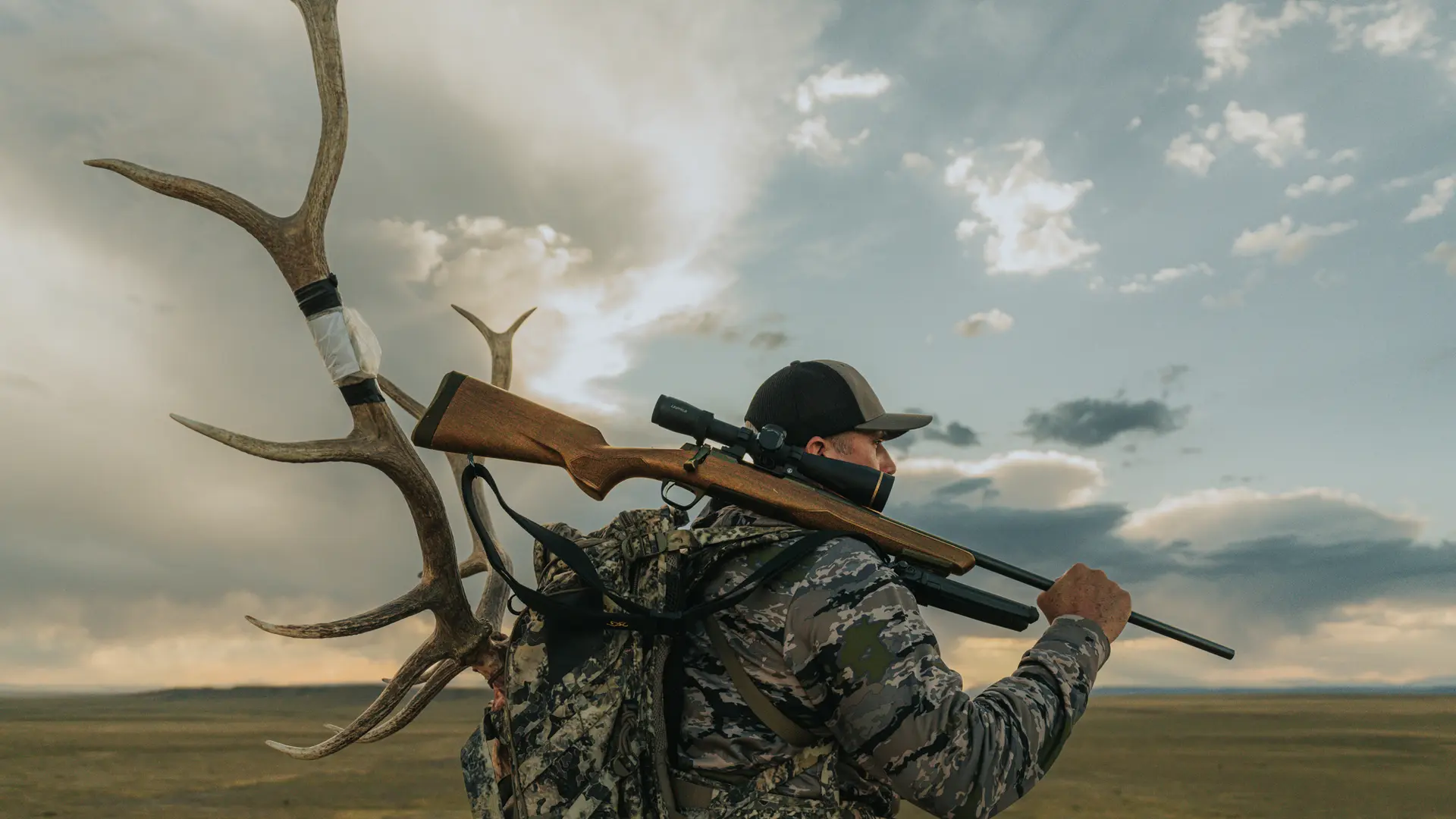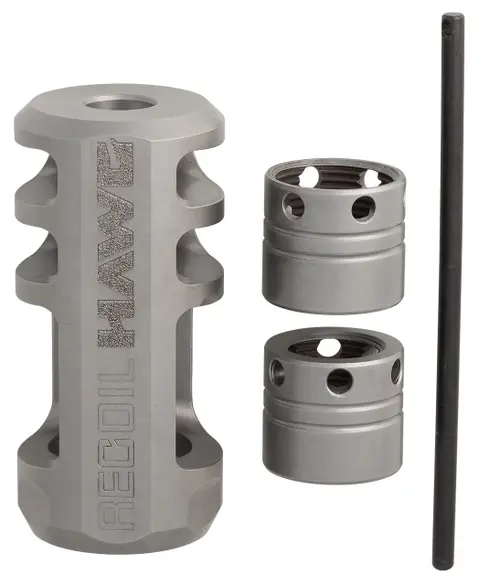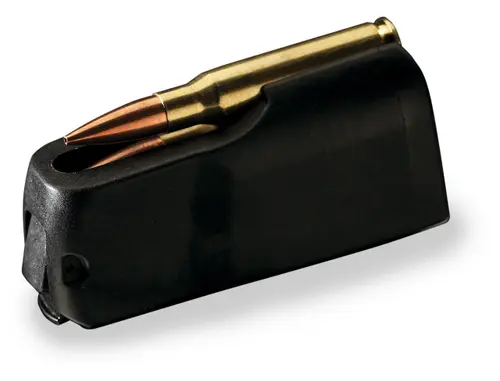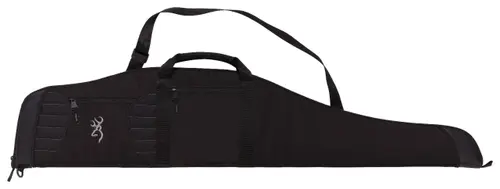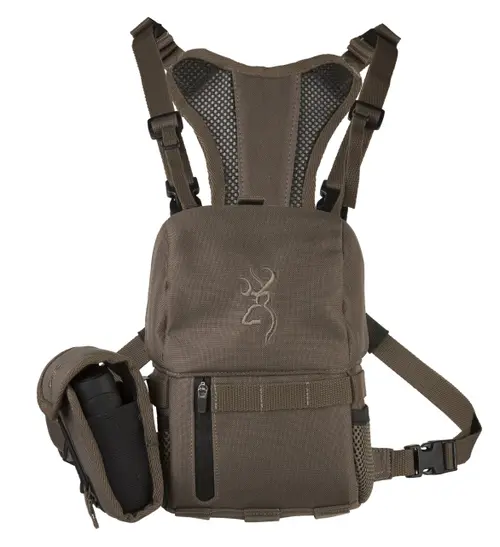Browning's X-Bolt 2 Hunter
Browning's X-Bolt 2 Hunter
Brad Fitzpatrick Published on November 5, 2024
As a rifle hunter today, I sometimes feel caught between two worlds. On the one hand, I love the classic look and feel of traditional sporting rifles with walnut stocks. Still, I also appreciate modern rifle designs with precise machining and quality components. Browning’s new X-Bolt 2 Hunter offers a compromise: It’s a gun with both classic looks and class-leading features.
When the original X-Bolt arrived in 2008, it was a revolutionary step forward for Browning and hunting rifles in general. The rising popularity of long-range shooting and hunting demanded more from factory rifles. Heavy triggers and sub-par accuracy were no longer acceptable, and Browning set a new standard with the X-Bolt. It offered an excellent rotary feed magazine, a crisp trigger, and a quality barrel. Its three-lug bolt design reduced bolt handle lift to all but end the risk of smashing your knuckles against the optic during cycling.
Since its inception, the X-Bolt has been available in a wide variety of models, most of which came with modern composite or carbon fiber stocks. Last year, when Browning unveiled the X-Bolt 2, the rifle was originally offered with an adjustable polymer stock. It is a brilliant design and well thought out, but it seemed to signify another nail in the coffin of walnut stocks. Many purists sighed in dismay.
There was no need for consternation because Browning has recently announced the Hunter version of their X-Bolt 2 with you guessed it, a walnut stock. I was fortunate enough to test the gun and carry it on a New Mexico elk hunt recently.
Changes To The X-Bolt 2
Changes To The X-Bolt 2
When its lifecycle ended in 2024, the original X-Bolt was still relevant and one of the best-selling rifles in America. Browning understood this, so they didn’t do a complete ground-up redesign with the X-Bolt 2. The changes are more evolutionary than revolutionary, and many hunters will have difficulty telling the difference between the two rifles at a glance.
There are some differences, though, and they make the X-Bolt 2 a better rifle. The original X-Bolt has a slightly undersized bolt knob which is not ideal for conducting quick reloads. The X-Bolt 2 comes with a larger, more ergonomic bolt knob that’s easier to get a handle on. The receiver of the new rifle has also been redesigned. It’s slightly beefier and has more surface area for the bolt to ride on for smoother, slicker operation. The X-Bolt 2 retains the X-Lock scope mount system and the added beef on top of the receiver offers more steel to engage the mounting screws.
Perhaps the most important new feature is the DLX Trigger. Like the previous Feather Trigger, it uses a multi-lever design with zero creep, zero overtravel, a crisp break, and is also user adjustable. It comes factory set at about three and a half pounds. Other new features for the X-Bolt 2 include a new Vari-Tech adjustable composite stock, and the Plus Magazine System that is offered on Long Range (LR) models increases magazine capacity.
Perhaps most telling are the features of this rifle that have had minor tweaks or no change at all, a testament to the original gun’s excellent overall design. The bolt release button and tang safety remain, as does the X-Lock system with four screws per scope base instead of the traditional two. The redesigned Inflex recoil pad returns, though it now measures 1.25 inches thick for extra shooting comfort. The Inflex pad does an admirable job reducing felt recoil, and the contoured design with radiused edges and heel prevents the pad from snagging on clothes. The tri-lug bolt is also carried over from the previous generation gun, which offers a short, 60-degree lift for faster bolt operation that clears optics. The outstanding rotary magazine also stays. The high-quality, triple checked barrel that made the original X-Bolts so accurate also carries over to the new generation.
Introducing the X-Bolt 2 Hunter
Introducing the X-Bolt 2 Hunter
I knew I would be attending a New Mexico elk hunt with Browning well before I knew which X-Bolt 2 rifle I’d use. I was a bit surprised (pleasantly so) when I showed up at the FFL and first laid eyes on the rifle. X-Bolt 2 Hunter rifles are equipped with Grade I black walnut, which is good, but not fancy, and perfect for a field gun. It features a straight American comb and comes with diamond-point checkered panels on the pistol grip and underside of the fore-end. A finger grove on the fore-end angles slightly upward toward the receiver and offers a good hold on the rifle. It’s also a nice styling touch; the finger groove and similarly angled line on the stock behind the pistol grip break up the gun’s lines without trying to look avant-garde or trendy.
Some wood stocks are particularly well fit, but the Browning is exceptional in this class. The recoil pad-to-walnut and stock-to-receiver fit are excellent. It looks very clean, like the barreled action grew into the tree from which the stock was cut. The wood has a low-gloss satin finish which I like better than the mirror varnish wood stocks that were the rage in the late 1900s.
The X-Bolt 2 Hunter comes equipped with a matte blued, sporter-weight barrel that ranges in length from 22 to 26 inches depending on the caliber. Twist rates are modern to reflect the use of heavy-for-caliber, high BC bullets. The 6.8 Western I tested has a 1:7.5 twist rate, and the 6.5 PRC version has a faster 1:7 twist. The barrels are crowned to protect the threads.
The test rifle weighed 6 pounds and 8 ounces, perfect for a rifle chambered in 6.8 Western. The overall length is 44 inches, and the magazine capacity on my test rifle was three rounds. The Hunter is available in several chamberings including .243 Win., 6.5 Creedmoor, 6.5 PRC, .270 Win., 6.8 Western, 7mm Rem. Mag., .308 Win., .30-06 Springfield, and .300 Win. Mag.
At the Range and In the Field
At the Range and In the Field
If you find yourself near Raton in New Mexico, I suggest you visit the NRA Whittington Center. It’s an impressive facility and the multitude of ranges to a mile or more is enough to make the grumpiest shooter grin. Fortunately for me, I had access to the center’s shooting ranges when we passed through on the way to our elk hunt and I had a chance to test the Browning there.
The New Mexico evaluation wasn’t a formal test, per se. I’d done that at home with initial sight-ins where the Browning X-Bolt 2 Hunter in 6.8 Western shot three-quarter-inch groups at 100 yards with Winchester’s Expedition Big Game ammo. This ammunition fires a 165-grain Accubond Long-Range bullet at a muzzle velocity of 2,970, and only endeared me more to the 6.8 Western.
At the Whittington Center, I adjusted for thinner air by dropping the zero point a bit (I live in Ohio, which is considerably closer to sea level than Raton) and shot the target. Dead-on. I dialed the Leupold CDS dial to 275 yards to engage the next target in line, a steel coyote silhouette. With that one still swinging, I dialed for 375 and thumped a steel plate. The final test was at 600 yards. I misjudged the wind a bit, and the impact drifted left, but it still hit the plate.
It was a long drive the rest of the way to the hunting area, and I was anxious to find out how the X-Bolt 2 performed in the field. We rose before dawn the next day, nearly hit a bull chasing a harem of cows on our way to a ranch where we’d be hunting. Dawn found me, Browning’s Rafe Nielsen, and our guide Gary sitting on a ridgetop and listening to the coyote chortles blend with elk bugles.
We saw several small bulls but nothing we wanted. Elk didn’t bugle much early in the hunt, but as the week progressed, something seemed to have flipped the herd’s hormonal switch, and suddenly, bulls bugled all hours of the day.
We were in elk or close to elk for much of the hunt, but finding a big one proved tricky. One morning, when our tenth or eleventh five-by-five bull that wasn't quite old enough paraded across the valley before us, I heard a coyote yap on the prairie. I saw the dusty-colored dog sitting with its rump against a juniper yap-yap-yapping, and it was hard not to switch tactics and start predator hunting.
A couple of pertinent observations about the X-Bolt 2 Hunter rifle: First, this gun inspires confidence. I’ve hunted with lots of rifles, most of which were test guns and not my own. The X-Bolt 2 gave me the feeling I could hit that coyote with the first shot at almost 500 yards. The crisp trigger, comfortable stock (which offers ample room for a thumb-forward grip, smooth bolt operation, and, most importantly, the ability to stack shots one atop another make it a real confidence booster. I haven’t always had that trust, but this Browning makes you feel like a better shooter than you are.
Second, the wood stock holds up well. It got a few dings and scratches, but that took genuine rough handling. The bluing never thinned despite a few thousand air miles, the requisite beating doled out by baggage handlers, and hours and hours spent thumping around in a pickup truck. Some new guns look old very quickly. The Hunter doesn’t, so you’ll earn its scars with miles and years of hard hunting. That’s something you don’t get with a polymer gun.
Lastly, the locking bolt is a great addition. A bolt that doesn’t lock closed is fine until you have to trundle through the dense brush with that firearm, and then every branch and bramble seems intent on tossing your bolt open. Such treatment gets very old, very fast, and I like being able to avoid it with a locking bolt.
On the third evening, our luck changed. We heard bugling high on a hill and moved carefully up among the pines. The elk seemed to have moved into a valley, and once we reached the top, we had to sort our way along the ridge until we found the herd. Gary briefly looked at the bull, who had nearly screamed himself voiceless as he corralled his cows in the late evening light. I waited for an opening. It finally came when the bull stepped into a clearing at 230 yards and looked in our direction.
The shot rang out, and I saw the bull lurch with the impact through the scope. He disappeared into a grove of dark conifers, but the cows remained. I thought I heard a crash, but it could have been the ringing in my ears. Was the bull down? The only way to check was to cut a zig-zagging pattern down the ridge. We found him piled up in the bottom, less than forty yards from where he’d been standing.
Could I have killed that elk with a modern carbon fiber bolt-action rifle? Sure. But there’s just something about a sporter rifle with a walnut stock that calls to me. If you feel the same way, you should take the time to check out Browning’s new X-Bolt 2 Hunter. It’s a classically styled hunting rifle that delivers as well as its cutting-edge composite counterparts.



